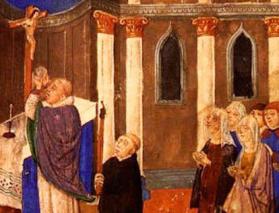Evangelia Anagostou-Laoutides’s Eros and Ritual in Ancient Literature is a complex, footnote-stuffed delight.
She examines three myths with erotic overtones – Atalanta, Daphnis, and Orpheus – summarizing the different presentations of the myths in early Greek (Hesiod, Greek drama), Hellenistic (Theocritus, Callimachus), and Roman (Virgil, Ovid, Propertius) literature. Along the way, she uncovers traces of ancient near eastern myths: Artemis is linked with Ishtar, Daphnis with Tammuz and Gilgamesh. There are even hints of the Song of Songs in Hellenistic versions of Daphnis. As a treatise in literary criticism, the book offer something of a social/cultic genealogy of literary genres, such as bucolic poetry.
That’s a pretty complex project by itself, but Anagnostou-Laoutides also searches for signs of literary manipulation that would reveal the ritual – and hence the social – origins of the myths, or at least of the tellings of the myths. Links between Atalanta and Artemis lead her to connect the Atalanta myth with nuptial rites of passage from childhood to adulthood, while the apples of the Atalanta story connect to the use of apples as aphrodisiacs and in fertility cults.
The range of the book is nicely captured in this concluding comment on the Daphnis myth: Theocritus “clearly included in the first Idyll Near Eastern patterns already documented in specific texts like the Babylonian Epic of Gilgamesh which was indirectly reflected in the angered speech of Daphnis toward the divine Aphrodite. The Babylonian episode of Gilgamesh and Ishtar mirrored the encounters of Adonis, Diomedes and Anchises with Aphrodite, all derived from Near Eastern cults. The divine couple of Adonis and Aphrodite, celebrated at Byblos, Alexandria and even fifth century Athens, originated in the ceremonial union of the fertility goddess with her consort which was ritually lamented throughout the East since primordial times. In particular, it is argued that the story of Daphnis belonged to the strange of the consort-goddess erotic and profoundly unhappy encounters. The pathetic fallacy typically associated with the death of Daphnis from Theocritus onwards should be understood as the literary representation of the cultic mourning in honour of Adonis” (430).
Footnotes crawl up the page, hundreds to a chapter, and many include illuminating substantive observations like: “Pherecydes of Syros . . . wrote that when Zeus was about to accomplish the creation he transformed himself into Eros” (xxi, f 31); citing N. Loraus, she writes of the twofold character of Artemis as mother and militant, pointing out that “motherhood is regarded as the feminine war” (24, fn 63); “the death of girls was a common mythological and ritual motif symbolising initiation into adulthood as well as marital life” (134, fn 115).
Some of the connections strike me as strained, and I’m skeptical about the ritual-first assumption that governs her reconstructions. Still, though not a popular work, it is a welcome sign that the always-artificial disciplinary boundaries between classics, ancient near eastern studies, and biblical studies are dissolving before our eyes.















